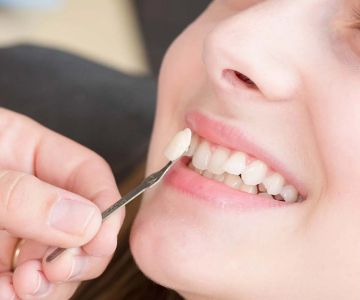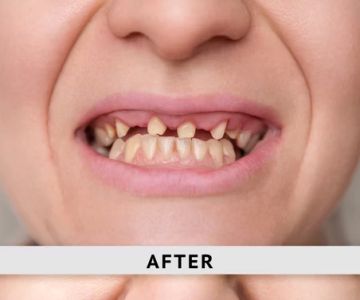Tooth Restoration Techniques: A Comprehensive Guide
The field of restorative dentistry has made significant strides over the past few decades, offering patients a plethora of options to enhance both functionality and aesthetics of their teeth. In the United States, restorative dentistry plays a crucial role in dental practices, redefining smiles and, in many cases, significantly improving the quality of life for patients. This article delves into various tooth restoration techniques, providing insights and information tailored specifically for the American demographic. By understanding these techniques, patients can make informed decisions about their dental care and explore options that best suit their needs.
Understanding Dental Crowns
Dental crowns, often referred to as caps, are one of the most common tooth restoration techniques used to restore shape, size, strength, and appearance of a damaged tooth. When discussing tooth restoration, mentioning dental crowns is inevitable because of their widespread applicability and success in restorative dentistry. They are typically recommended for teeth that are significantly decayed or damaged, following root canals, or to support dental bridges.
Dental crowns can be made from various materials, including porcelain, ceramic, metal, and resin. Each material offers distinct advantages. For instance, porcelain and ceramic crowns are popular for their ability to mimic the natural look of teeth, making them suitable for front teeth restorations. On the other hand, metal crowns, which may include gold or platinum, are known for their durability and are generally used for molars.
According to the American Dental Association, the lifespan of dental crowns varies between 5 to 15 years, depending on the materials used and the patient's oral hygiene practices. Proper care involves regular brushing, flossing, and professional dental cleanings.
The Role of Veneers in Aesthetic Enhancement
Veneers offer a minimally invasive option for those looking to improve the aesthetic appeal of their teeth. These thin shells, often made of porcelain or composite resin, cover the front surface of teeth to correct imperfections such as chips, discoloration, and uneven spacing.
The application of veneers typically involves removing a small amount of enamel from the tooth surface, allowing the veneer to seamlessly bond and align with adjacent teeth. While composite resin veneers are often completed in one appointment, porcelain veneers usually require two visits, with a temporary veneer worn in between.
Statistical reports from the American Academy of Cosmetic Dentistry have highlighted an increase in veneer procedures, with patients reporting high satisfaction rates due to the natural appearance and resilience of modern veneers.
Dental Bonding: An Affordable Solution
Dental bonding is a cost-effective restorative solution that addresses minor cosmetic issues such as tooth gaps, chips, and discoloration. It involves applying a tooth-colored resin material that hardens with a special light, bonding it to the tooth for a polished finish.
This procedure is advantageous for individuals seeking a quick solution, as it often requires minimal preparation and can be completed in one office visit. Dental bonding is usually best for small corrections, as it is less durable than other restoration techniques like crowns or veneers.
Nevertheless, with proper care, dental bonding can significantly enhance the appearance of teeth and improve one's smile. Regular dental check-ups and avoiding habits such as biting nails or chewing ice are recommended to maintain the integrity of bonded teeth.
Exploring Dental Implants for Lasting Restoration
Dental implants are recognized as one of the most effective long-term solutions for tooth loss. They involve surgically implanting a titanium post into the jawbone, which serves as a permanent anchor for a crown, bridge, or denture.
Implants offer numerous benefits, including the prevention of jawbone deterioration and the restoration of chewing functionality. They mimic the natural teeth in both appearance and function, often becoming the preferred choice for patients requiring one or more teeth replacement.
Despite the higher initial cost, dental implants are considered a worthwhile investment due to their durability and the confidence they provide patients, contributing to an improved quality of life.
Partial Dentures and Their Place in Restorative Dentistry
Partial dentures offer a removable option for patients missing several teeth, where they fill the spaces and prevent other teeth from changing position. Made from a combination of acrylic and metal, partial dentures are custom-fitted for comfort and aesthetic harmony.
While not as stable as dental implants, partial dentures are a more affordable and less invasive option. They are especially beneficial for patients who cannot undergo surgical procedures due to medical conditions or personal preference.
Proper maintenance, including regular cleaning and adjustments by a dental professional, ensures that partial dentures remain functional and comfortable over time.
Emphasizing the Importance of Regular Dental Check-ups
Regardless of the restoration technique chosen, regular dental check-ups are paramount to maintaining oral health and the longevity of restorative work. Dentists can monitor the condition of restorations, provide professional cleanings, and address any emerging issues promptly.
Patients are encouraged to visit their dentist at least twice a year for routine exams and cleanings. These check-ups are crucial for early detection of potential problems, allowing for conservative treatments and prevention of further complications.
Integrating professional dental care with a consistent oral hygiene routine at home enhances the effectiveness of restorative dentistry and promotes a healthy, confident smile.
In conclusion, tooth restoration techniques offer diverse solutions tailored to meet the varying needs and preferences of patients. Whether opting for crowns, veneers, bonding, implants, or dentures, understanding each method's benefits and limitations equips patients to make informed decisions. By incorporating these techniques into routine dental care, individuals can achieve improved oral health and enhanced self-esteem. For more information on restorative dentistry and personalized recommendations, visit Dentistry Toothtruth.
Actionable steps include consulting with a certified dental professional, researching restorative options, and maintaining an effective oral hygiene regimen. Together, these measures ensure lasting results and a lifetime of healthy smiles.







 Westgate Dental Arts
Westgate Dental Arts Coventry Family Dental
Coventry Family Dental Familia Dental
Familia Dental Dr. Daniel S. Fife, DDS
Dr. Daniel S. Fife, DDS Dentistry At Suburban Square: Michael I. Wollock, DMD
Dentistry At Suburban Square: Michael I. Wollock, DMD Comfort Care Dental
Comfort Care Dental The Importance of Oral Health Education During Pregnancy for a Healthy Pregnancy
The Importance of Oral Health Education During Pregnancy for a Healthy Pregnancy Why Skipping Dental Checkups Can Lead to Bigger Oral Health Problems
Why Skipping Dental Checkups Can Lead to Bigger Oral Health Problems Advantages of Porcelain Dental Restorations
Advantages of Porcelain Dental Restorations Best Tips for Brushing Your Teeth Properly for Healthy Gums: Essential Techniques for Oral Health
Best Tips for Brushing Your Teeth Properly for Healthy Gums: Essential Techniques for Oral Health How Can Diabetes Cause Tooth and Gum Problems? Preventing and Managing Oral Health Issues
How Can Diabetes Cause Tooth and Gum Problems? Preventing and Managing Oral Health Issues Healthy Habits for Promoting Good Oral Health and Hygiene: Tips for a Healthy Smile
Healthy Habits for Promoting Good Oral Health and Hygiene: Tips for a Healthy Smile